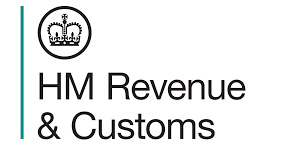HMRC SDLT: Example of Stamp Duty Land Tax on Options and Pre-emption Rights
Stamp Duty Land Tax on Options and Linked Transactions
This example explains how Stamp Duty Land Tax (SDLT) applies to options and linked transactions involving non-residential property. It covers the tax implications of granting an option to purchase property and the subsequent exercise of that option, highlighting the need for separate land transaction returns and the calculation of SDLT based on linked transaction values.
- P Limited was granted an option by V Limited to buy an office block for £3,000,000, with an initial payment of £250,000 for the option.
- The acquisition of the option is a separate land transaction, effective from 1 January 2020, and subject to SDLT at non-residential rates.
- P Limited must file a land transaction return within 14 days of the option grant and pay SDLT on the £250,000.
- The exercise of the option on 1 December 2020 is a separate transaction, with the total consideration of £3,250,000 being a linked transaction value.
- SDLT calculations include £2,000 on the option grant and £140,308 on the completion of the transfer, with an additional top-up of £9,692 for the option fee.
- A further return is required under FA03/S81A for the option price, linked to the purchase price, and should include the original transaction return number.
“`

Read the original guidance here:
HMRC SDLT: Example of Stamp Duty Land Tax on Options and Pre-emption Rights
Understanding Stamp Duty Land Tax (SDLT) for Options and Rights of Pre-emption
Overview of the Scenario
Let’s discuss an example to illustrate how Stamp Duty Land Tax (SDLT) works when it comes to options and rights of pre-emption.
– Parties Involved:
– P Limited (the buyer)
– V Limited (the seller)
– Key Dates:
– 1 January 2020: Option granted
– 1 December 2020: Option exercised and purchase completed
– Transaction Details:
– Cost of the option: £250,000
– Price of the office block: £3,000,000
What is the Option and Its Tax Implications?
An option allows P Limited the right to buy an office block from V Limited. The £250,000 payment is solely for the right to purchase; it does not include the actual cost of the property.
– The total price for the property will be £3,000,000 plus the option fee of £250,000.
– The effective date for the option transaction is 1 January 2020. This is the date when P Limited gains the right to purchase the property.
Liability for Stamp Duty Land Tax
Since the option involves non-residential property, SDLT applies based on the rates for non-residential transactions.
– P Limited needs to submit a land transaction return to HM Revenue & Customs (HMRC) within 14 days of 1 January 2020.
– The SDLT is calculated on the £250,000 fee for the option based on the rates applicable on that date.
Separate but Linked Transactions
When P Limited decides to exercise the option and buys the property on 1 December 2020, this transaction is treated as a separate land transaction. However, both transactions are linked due to the timing and nature of the agreement. Here’s how they are connected:
1. The original option transaction where P Limited paid £250,000.
2. The property purchase transaction where P Limited pays £3,000,000.
Calculating SDLT for the Overall Transaction
For the overall SDLT calculations, both the option payment and the property price are used to determine the total consideration.
– When P Limited completes the purchase, the linked total for SDLT calculations becomes £3,250,000 (combined fee of £250,000 and property price of £3,000,000).
Handling the Land Transaction Return
In the land transaction return when the property is transferred, the following information is pertinent:
– In question 1.13 of the return, the linked transaction value should be noted as £3,250,000.
– For question 1.10, the purchase price of £3,000,000 needs to be reported.
The effective date for this land transaction, relating to the completion of the sale, is 1 December 2020.
Further Return Requirements
After the option is exercised, a further return must be submitted that addresses the option payment of £250,000 since it is linked to the purchase price of £3,000,000.
– This additional return should be sent by letter to the Stamp Office, and it should reference the original land transaction return number for ease of processing.
– For further guidance on linked transactions, you can refer to this link: Linked Transactions Guidance.
SDLT Calculation Breakdown
Here’s how SDLT is calculated based on the example:
1. On the Grant of the Option (1 January 2020):
– SDLT on the £250,000 is calculated at the non-residential rates applicable on that date.
– This amounts to £2,000.
2. On Completion of the Property Transfer (1 December 2020):
– SDLT applies to the further payment of £3,000,000.
– The SDLT is based on the total consideration of £3,250,000.
– The SDLT on £3,250,000 totals £152,000.
– The SDLT due upon completion of the property transfer is calculated as follows:
– £3,000,000 (purchase price) / £3,250,000 (linked total) x £152,000 = £140,308.
3. Additional SDLT on the Option Fee:
– Further SDLT is also required on the £250,000 option fee.
– The calculation is similarly based on the rates applicable at the time the option was granted.
– This results in:
– £250,000 (option fee) / £3,250,000 (linked total) x £152,000 = £11,692.
– Since P Limited has already paid £2,000 on the option, the additional amount owed is:
– £11,692 (SDLT on the option fee) – £2,000 (already paid) = £9,692.
Submitting SDLT Payments
Once the SDLT has been calculated for both the option and the property transfer, P Limited must ensure that payments are made on time to avoid penalties.
– SDLT for the option transaction is due shortly after the grant of the option.
– SDLT for the transaction upon exercising the option is due at completion, which in this example is 1 December 2020.
It is important for businesses and individuals to be aware of the SDLT obligations arising from land transactions involving options and pre-emption rights. Each component of the transactions must be carefully reported and calculated to ensure compliance with the regulations set by HMRC.
Overall, understanding the nature of each transaction and ensuring accurate reporting will assist in fulfilling SDLT responsibilities appropriately.







